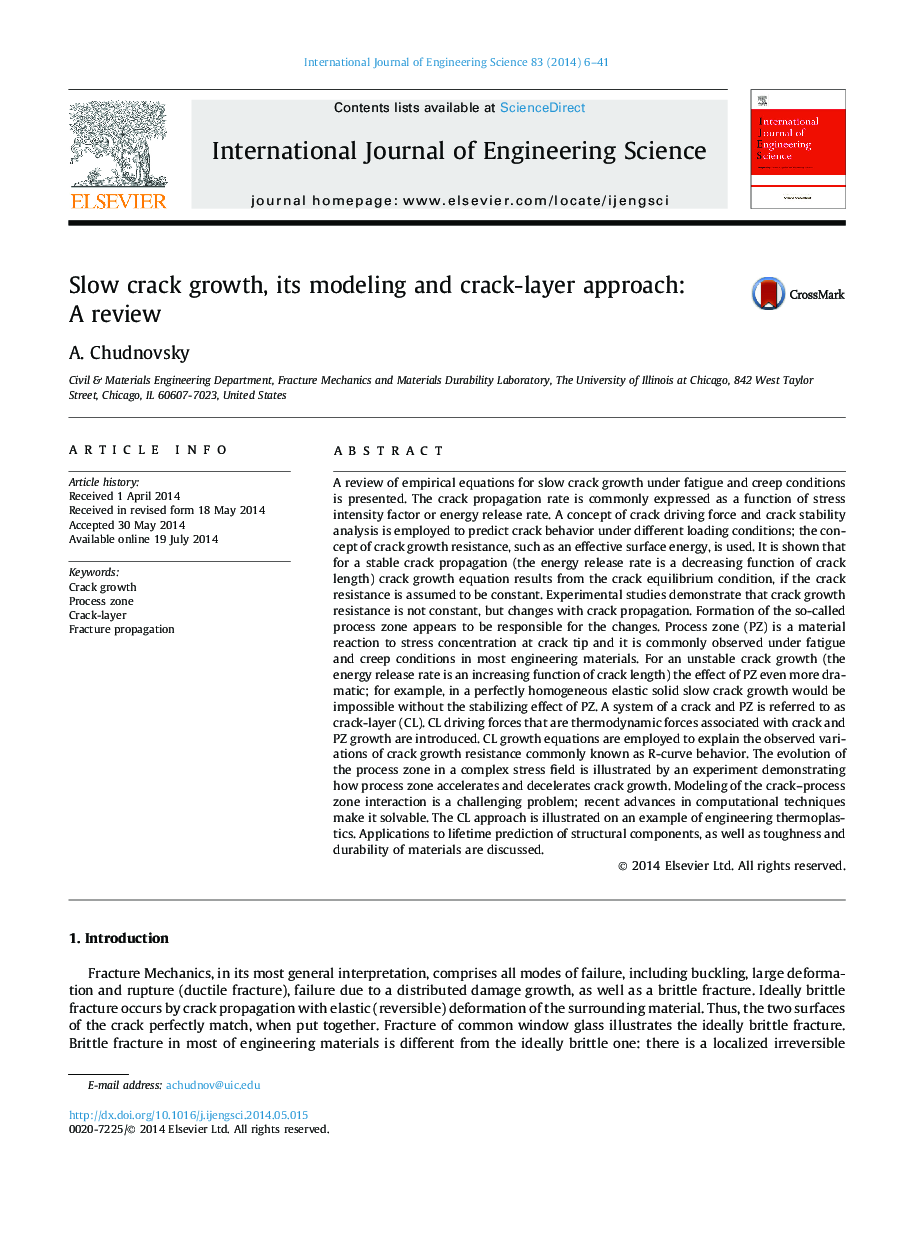| کد مقاله | کد نشریه | سال انتشار | مقاله انگلیسی | نسخه تمام متن |
|---|---|---|---|---|
| 824858 | 1469987 | 2014 | 36 صفحه PDF | دانلود رایگان |
A review of empirical equations for slow crack growth under fatigue and creep conditions is presented. The crack propagation rate is commonly expressed as a function of stress intensity factor or energy release rate. A concept of crack driving force and crack stability analysis is employed to predict crack behavior under different loading conditions; the concept of crack growth resistance, such as an effective surface energy, is used. It is shown that for a stable crack propagation (the energy release rate is a decreasing function of crack length) crack growth equation results from the crack equilibrium condition, if the crack resistance is assumed to be constant. Experimental studies demonstrate that crack growth resistance is not constant, but changes with crack propagation. Formation of the so-called process zone appears to be responsible for the changes. Process zone (PZ) is a material reaction to stress concentration at crack tip and it is commonly observed under fatigue and creep conditions in most engineering materials. For an unstable crack growth (the energy release rate is an increasing function of crack length) the effect of PZ even more dramatic; for example, in a perfectly homogeneous elastic solid slow crack growth would be impossible without the stabilizing effect of PZ. A system of a crack and PZ is referred to as crack-layer (CL). CL driving forces that are thermodynamic forces associated with crack and PZ growth are introduced. CL growth equations are employed to explain the observed variations of crack growth resistance commonly known as R-curve behavior. The evolution of the process zone in a complex stress field is illustrated by an experiment demonstrating how process zone accelerates and decelerates crack growth. Modeling of the crack–process zone interaction is a challenging problem; recent advances in computational techniques make it solvable. The CL approach is illustrated on an example of engineering thermoplastics. Applications to lifetime prediction of structural components, as well as toughness and durability of materials are discussed.
Journal: International Journal of Engineering Science - Volume 83, October 2014, Pages 6–41
